October itinerary in Japan Day 1 (Ishikawa Day 1)
(Wednesday, October 20)
Table of contents
1. Move from Haneda Airport to Komatsu Airport
I went on a trip to Ishikawa, Fukui, Kyoto and Hyogo prefectures from October 20th (Wednesday) to October 27th (Wednesday) for 7 nights and 8 days. This is the route that I proposed the itinerary idea in my blog on October 2nd. This itinerary was created from prefectures with a large amount of fish and shellfish that will be in season in October. Both Ishikawa and Hyogo prefectures were ranked 4th in the national ranking.
In addition, for this trip as well, luggage such as clothing was sent to the accommodation in advance, and a “Hands-free trip (Luggage free travel) “ was carried out without carrying large luggage. “Hands-free trip” is easy while traveling, and it has also helped me to make effective use of my time. I sent the clothes I wore from my last accommodation to a laundry agency, so it was an easy trip without having to do the laundry.
1. Move from Haneda Airport to Komatsu Airport
I flew to Komatsu Airport by ANA751 flight (departing from Haneda Airport at 8:30 and arriving at Komatsu Airport at 9:30). It’s just an hour flight. The weather was fine on that day, and the snow-capped Mt. Fuji looked beautiful from the plane. It makes me feel bright when Mt. Fuji looks beautiful in the morning. From the plane from Haneda to Komatsu Airport, you can see Mt. Fuji from the window on the left. If you want to see Mt. Fuji for Komatsu Airport, reserve a window seat on the left side.

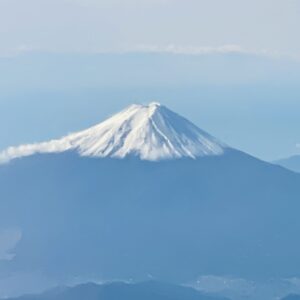
Komatsu Airport is located in Komatsu City, Ishikawa Prefecture, but since Fukui Prefecture does not have a large airport, Komatsu Airport is also used when traveling to Fukui Prefecture. In fact, the arrival lobby of Komatsu Airport is also decorated with the Fukui Prefecture advertising panel “Fukui, Kingdom of Dinosaurs”.
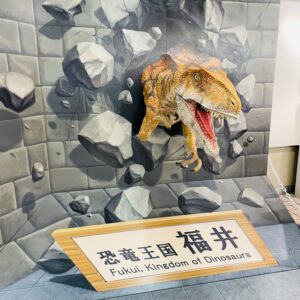
It takes about 40 minutes by bus from Komatsu Airport to Kanazawa Station, but it takes about 55 minutes by bus to Fukui Station, so there is no big difference in access. You can also get to Kanazawa Station from Tokyo by the Hokuriku Shinkansen. JR is scheduled to extend to Fukui Station in the spring of 2024 and open. I will post the details of my trip to Fukui prefecture at a later date. It is a prefecture with very attractive tourism resources, so I would like everyone to go to Fukui prefecture more and more.
It is a 12-minute bus ride from Komatsu Airport to Komatsu Station. I took a bus from Komatsu Airport at 9:45 to Komatsu Station at 9:57 (fare 280 yen). The time required from the airport to the main station is one of the shortest domestic airports. It is very comfortable if the travel time from the airport to the city is short.
2. Komatsu no Mori
“Komatsu no mori” is a 1-minute walk from the east exit of Komatsu Station. “Komatsu no mori” is a facility that was established on the site of the Komatsu Factory in 2011 to commemorate the 90th anniversary of the founding of Komatsu, a construction machinery manufacturer. You can enjoy it all for free.
The appeal of “Komatsu no mori” is that you can board the driver’s seat of the super-large dump truck “930E” and the super-large hydraulic excavator “PC4000”, which are the only ones in Japan. Both of them operate only in overseas mines, so in Japan you can only ride in “Komatsu no mori”.
The super-large dump truck “930E” is a huge dump truck with a total height of 7.3 m and a body weight of 202 tons. The tires alone are 3.8m high and weigh 4.8 tons. I was allowed to board the driver’s seat, but I felt like I was in a building rather than in a vehicle.

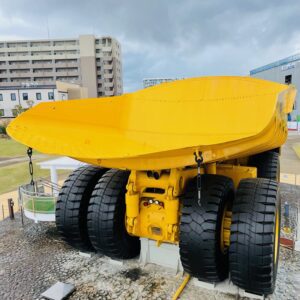
The ultra-large hydraulic excavator “PC4000” has a vehicle height of 8.3m and a maximum excavation height of 15m, which is higher than the “930E”. Since the height of Mobile Suit Gundam is set to 18m, it can be said that the “PC4000” is as large as the Gundam. The weight of the “PC4000” is 392 tons, which is almost twice the weight of the “930E”. Boarding the “930E” and “PC4000” in the driver’s seat was a very good experience.
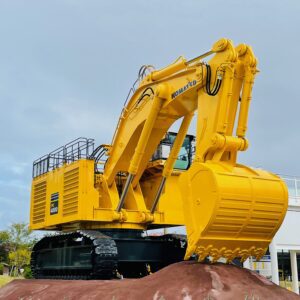
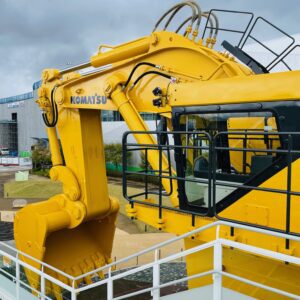
Boarding dates and times for both large construction machines are as follows.
event date
Every Tuesday-Saturday (excluding the 5th Saturday)
(April-November) 10: 00-11: 00/15: 00-16: 00
(December-March) 10: 00-10: 30 / 15: 00-15: 30
It will be canceled in bad weather.
Applicable to those who wear shoes and are over 95 cm tall.
No reservation is required.
You cannot drive or operate the “930E” or “PC4000”. However, elementary school students and younger can test drive a mini excavator and experience “ball scooping”.

The dates and times of the mini excavator test drive experience are as follows.
Every Wednesday and Saturday (excluding the 5th Saturday)
14: 00-15: 00
No reservation is required.
In addition, “Komatsu no Mori” has “Waku Waku Komatsu History Museum” where you can learn about the history of Komatsu and “Construction machines that supported Komatsu” in the outdoor exhibition. The “Waku Waku Komatsu History Museum” is a reproduction of the former Komatsu headquarters building. Japan’s first domestically produced agricultural tractor “G25 tractor” manufactured in 1932 is also on display.
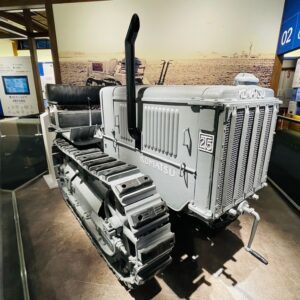
I didn’t know it at all, but Komatsu founder Meitaro Takeuchi is the older brother (half-brother) of former Prime Minister Shigeru Yoshida. Meitaro Takeuchi was also a supporter of Nissan Motor’s predecessor, Kaishinsha. The T of the first domestically produced automobile “DAT” exhibited at the 1914 Ueno Expo comes from the acronym of Meitaro Takeuchi. I was able to learn various things at the “Waku Waku Komatsu History Museum”.
The exhibition of “construction machines that supported Komatsu” was also interesting. The photos are from top to bottom: Komatsu Unica LT1200 (manufactured in 1964), the original bulldozer “D50-2-16 (manufactured in 1949)”, and a bucket loader with a bulldozer “D50-8” (manufactured in 1949). “Manufacturing year 1957”, Dozer excavator No. 1 “D50-S 8 type (Manufacturing year 1958)”, Bulldozer “D50A (Manufacturing year 1963)”, Komatsu’s oldest wheel loader “JH30B (Manufacturing year 1965)” .
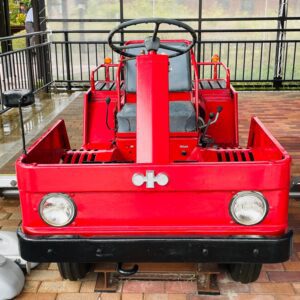

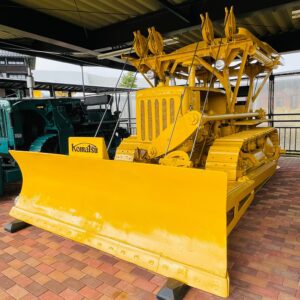
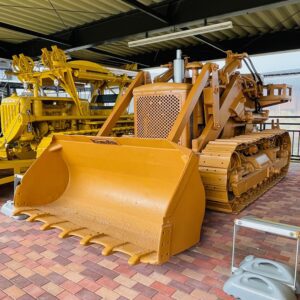


3. Natadera temple
After lunch, I went to Natadera temple. To get to Natadera temple, take the JR train from Komatsu Station to Awazu Station (depart Komatsu Station at 13:01, arrive at Awazu Station at 13:06, fare 190 yen), and then take a bus from Awazu Station to Natadera (depart from the station at 13:35, arriving at Natadera temple at 13:46, fare 340 yen). Depending on the time of day, there is also a bus from Komatsu Station to Natadera Temple.
Natadera is a temple that originated from the Hakusan worship, which is a type of nature worship, and is said to have been built by Taicho (opening Hakusan) in 717. Hakusan, along with Mt. Fuji and Mt. Tateyama, is one of the Three Holy Mountains in Japan.
Natadera Temple’s Daihi-kaku (main shrine), three-storied pagoda, Goma-do, Shoro (bell tower) , and Shoin are national important cultural property. In addition, Kigan Yusenkyo Rock and Inari Shrine, Shoin Garden and Tea Room are national scenic spots. I was particularly impressed with the splendor of Daihi-kaku (main shrine). Unfortunately it was raining on the day, but I was able to fully enjoy the wonderful buildings and gardens of Natadera Temple.
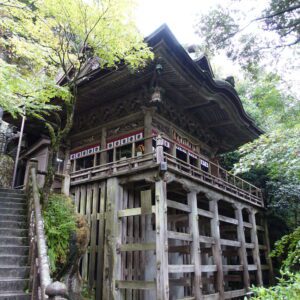




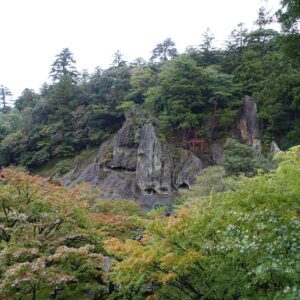
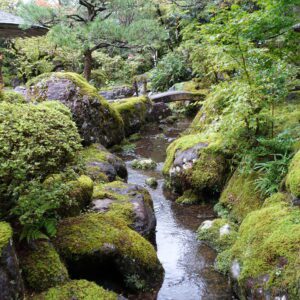
On October 20th, when I visited, the Hokuriku Craft Festival “GO FOR KOGEI 2021” was held at Natadera Temple. The combination of old temples and art was very good. In particular, the work “Memory of Water” using the glass of Rui Sasaki, the first photo, was fantastic. It was the only work exhibited in the national important cultural property “Shoin”, so I think it was the most noticeable work in this “GO FOR KOGEI 2021”. The Hokuriku Craft Festival ended on October 24th.



Admission fee: Adults (junior high school students and above) 600 yen, elementary school students 300 yen, infants free
Special visits (Shoin, Shoin Garden / Tea Room, Sansonishi / Rumien) add 200 yen to general visits
After visiting Natadera Temple, I took a break at “Hanayama-tei” and headed to Kanazawa while waiting for the bus time. I took a bus (Natadera 16:05, Awazu Station 16:19, 340 yen) and JR train(Awazu Station 16:55, 17:36 Kanazawa Station, 590 yen).
Please note that there are only 5 buses a day from Natadera (for Awazu Station and Komatsu Station) on weekdays and 3 buses a day on Saturdays, Sundays, and holidays. The tour bus “Can bus” that goes around Kaga Onsenkyo will be suspended until October 31, but it has been announced that the bus that also stops at Natadera Temple will resume operation from November 1. Since the canvas operates four times a day, access to Natadera Temple will be greatly improved when combined with the fixed-route bus.
Kaga Onsenkyo is a general term for four hot spring areas: Awazu Onsen, Katayamazu Onsen, Yamashiro Onsen, and Yamanaka Onsen. Natadera Temple is near Awazu Onsen.
Note: The departure / arrival times, fees, admission fees, etc. of transportation listed in the text are as of the time of writing the BLOG. They may change in the future, so please check for yourself when you go on a trip.
